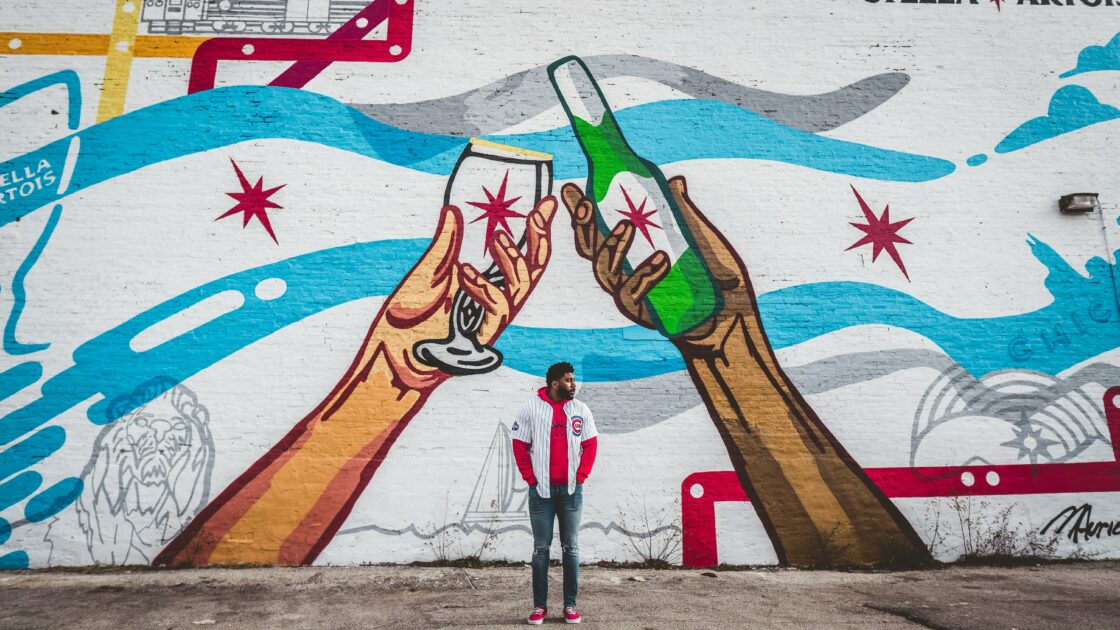Street art, also known as graffiti artwork, was once used to raise a voice against the government to promote movies and advertise. The graffiti artists used their art to convey messages and to bring uprising. Due to all this, graffiti art became infamous. However, in recent years, it has gained so much popularity that even the government invited artists to decorate walls. Decorated walls beautify the city and give it a new identity. Countries like Brazil, organise international competitions to support graffiti artists.
As far as India is concerned, street art gained popularity in the 2000s. Popular artists like Yantra, Daku, etc were prominent figures. They used this art form to decorate murals and express themselves. Metropolitan cities like Delhi and Mumbai witnessed a surge in Wall Street art during 2006 and 2007. However, this art remained confined to cities only.
During the Commonwealth Games in Delhi, the government invited many mural painters to beautify the city. Despite all this, this art is often considered illegal, and there are many reasons behind it.
Without prior permission from the authorities and without purpose, graffiti is vandalism in the eyes of the government. The government takes severe action against such activities.
Well, if you are an artist and wish to learn more about street art in India, this blog is for you. Let’s start!
First of all, let’s know about some of the famous places known for their graffiti.
Also read, Modern Oil Paintings: 5 Most Famous Artworks
Famous Street Art Areas in India
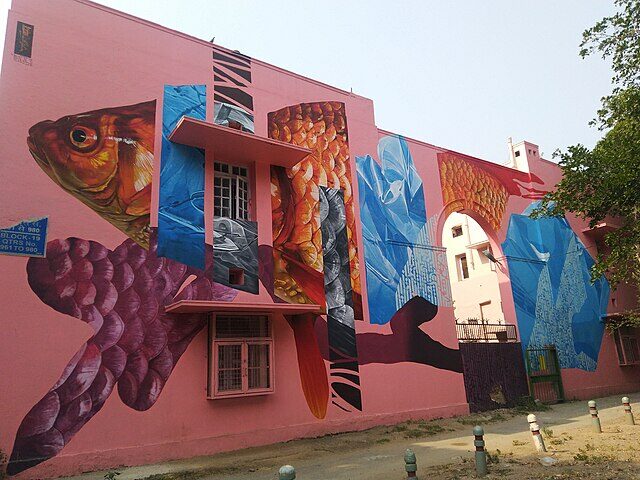
Lodhi Garden is a very posh area in Delhi. There are many government buildings, housing and famous streets. In all such hustle and bustle, an art district lies in this area and has become quite famous for its street art.
It is one of the most famous hotspots for graffiti artists. Not only local artists, but even international graffiti artists showcase their talent on the walls of these streets. These artists use a blend of both historical and contemporary art forms to create their masterpieces.
As a visitor, one can experience a surreal world of graffiti in the Lodhi Art District.
Prayagraj Sangam, Uttar Pradesh
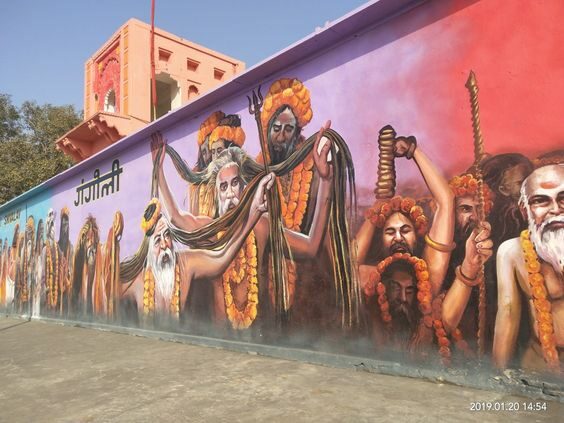
Kumbh Mela is one of the largest religious processions in the world. Lacs of devotees gather and take holy baths to purify themselves. This month-long fair attracts tourists from all over the world. To make Prayagraj City vibrant, the government started the #paintmycity campaign.
The government invited graffiti painters to create Kumbh-theme-based street art to decorate the city. During this phase, the holy Prayagarj city was decorated with vibrant graffiti. Artists from all over India participated in this event. The government not only felicitated these artists but also compensated them for their hard work.
Still, when you visit the ghats of Prayagraj, you will witness a wide range of mesmerizing street art, making the city full of life.
Street Arts of Kolkata
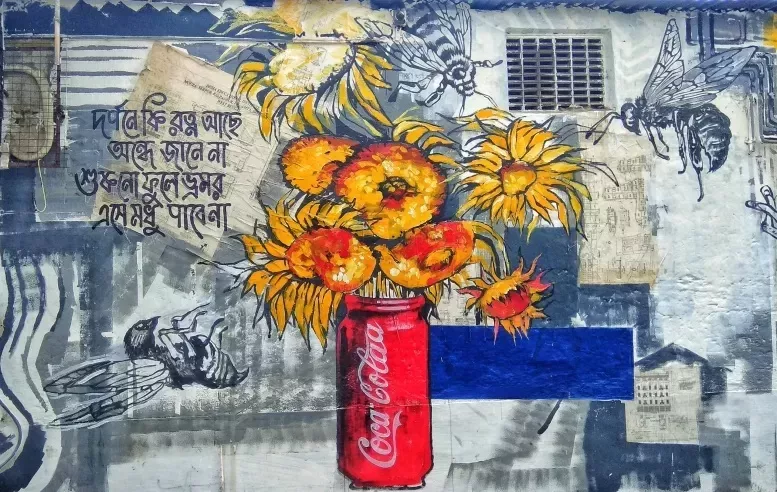
Kolkata is famous as the city of joy and the cultural city of India. Beautiful graffiti adorns the walls of the city, making it look so vibrant. One can spot amazing graffiti in the whole of Kolkata city. The whole city including flyovers, college walls, bus stands, and old buildings is decorated with graffiti.
As an art lover, you can spot different themes depicted on the walls of Kolkata.
Bandra, Mumbai
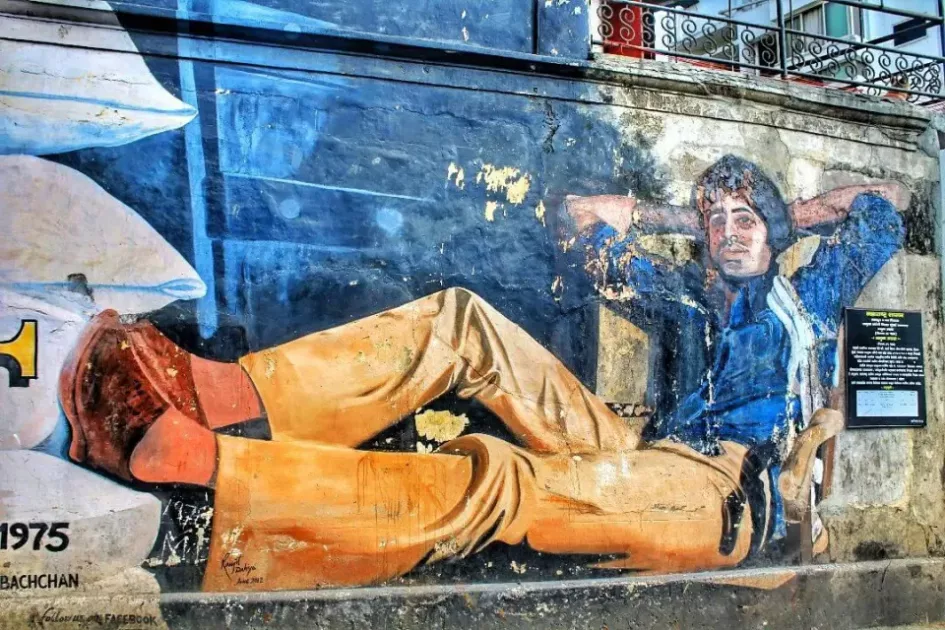
When you roam through the financial capital of India, Mumbai, you will notice colourful murals, especially in the streets of Bandra. Themes from famous movies, contemporary art, and decorated stairs and pathways are there.
In Bandra, Chapel Road is quite famous for its graffiti artwork. Almost every wall on this street gives a different message through its graffiti. You will be astonished by the craftsmanship of the graffiti artists who painted these.
What Does the Indian Law Say About Graffiti?
Well, there is no clear law to categorise street painting as vandalism. However, if a person creates street graffiti without permission from the authorities, it is an act of vandalism. Therefore, all such acts fall into the category of vandalism. The stringent punishment is being inflicted on all such wrongdoers. But if we think from the point of view of an artist, he does nothing wrong by expressing himself. Moreover, he uses his own money to buy resources like paints and other materials.
On the other hand, if the government invites graffiti artists to create graffiti art, for purposes like educating voters or promoting government schemes, they get compensation.
Then the question arises, why are street artists so infamous?
The image of graffiti artists has been tarnished by politically motivated people. These people hire graffiti artists to convey their political messages by vandalising government properties. In some universities, college walls are decorated with graffiti to convey powerful messages. Whereas, universities like JNU became infamous in recent years for targeting the government and raising voices against the sovereignty of India.
Whatever the reason may be, negative events bring artists into a negative light. Well, despite all this, street art has flourished, there are famous artists all over India, that are known for their street art.
Final words from a Street Art lover
As an art lover, I believe that the government should frame a law for street graffiti, not every mural art should fall into the category of vandalism. Moreover, artists are also citizens of India, therefore, it is their responsibility to showcase their talent by taking proper care of the law.
Instead of falling into the trap of political propaganda of the political parties, they should convey their message freely without any favour.
Furthermore, the government should hire all such talented graffiti artists who can turn a dull city into a lively one. If both of them cooperate and support each other, it will be beneficial for the country and the welfare of the street artists.
Artists like Daku, Yantr, Zine, and Ranjit Dahiya can provide a platform for newbies to acquire a new skill of learning street art. The government should encourage such artists to make others learn the skill of street art through government-sponsored programs.
